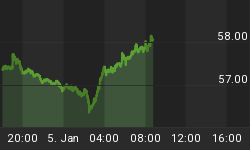
www.cartoonstock.com
Inspired by the most recent research presented by Wayne Whaley (CTA of Witter & Lester Inc.) analyzing the market's historical performance at and around the State of the Union Addresses (which hasn't been part of my personal arsenal of seasonalities up to now, and this seasonality takes place on today's session), I thought it would be interesting to check for the S&P 500's performance before 1970 as well (Wayne goes back until 1970), and in the event the market was already close to an 52-week high at the time of the State of the Union Addresses.
Table I below shows all occurrences (since 1990) and the S&P 500's performance over the course of the then following 1 to 4 sessions, assumed one went long of a session immediately preceding the State of the Union Addresses in pre-election years (like 2011).

+ no close below trigger day's close during period under review
- no close above trigger day's close during period under review
The market closed higher on the State of the Union Addresses session in pre-election years (like on Tuesday, January 25, 2011) on 16 out of 20 occurrences (or 80% of the time), and was trading at a higher level the session immediately following the State of the Union Addresses on 17 out of 20 occurrences (thereof the last 13). Chances for an +/- 1.0% change two sessions later (in this event on Wednesday, January 26) are 9 : 1 (9 occurrences with a 1.0%+ up-move, but only 1 occurrence with a -1.0%+ loss), and downside potential was regularly limited (except in 1931) over the course of the then following four sessions (the remainder of this week).
In addition, the S&P 500 did not post a single close below the trigger day's close over the course of the then following four sessions on 8 out of 20 occurrences, but did not manage at least one higher close during the next four sessions only once (in 1931).
Table II below now shows all occurrences (since 1990) and the S&P 500's performance over the course of the then following 1 to 4 sessions, assumed one went long of a session immediately preceding the State of the Union Addresses where the S&P 500 had closed at a 52-week high at least once during the last five sessions immediately preceding the State of the Union Addresses.

+ no close below trigger day's close during period under review
- no close above trigger day's close during period under review
Almost the same picture again. Even (despite the regular mean-reversion tendency) when the S&P 500 had already closed at a 52-week high at least once during the last five sessions immediately preceding the State of the Union Addresses, the market was trading on a firm note and closed at an even higher level four sessions later (in this event on January 28, 2011) on 18 out of 21 occurrences. Chances for an +/- 1.0% change four sessions later were 7 : 1 (7 occurrences with a 1.0%+ up-move, but only 1 occurrence with a -1.0%+ loss), and downside potential was regularly limited (except in 1953) over the course of the then following four sessions.
In addition, the S&P 500 did not post a single close below the trigger day's close over the course of the then following four sessions on 9 out of 20 occurrences, but did not manage at least one higher close during the next four sessions only once (in 1953).
Conclusions:
(Unfortunately, no compliance in signals triggerd) Contrary to the negative setup triggered on Monday's close when the SPY (S&P 500 SPDR) left an unfilled opening gap up on option expiration and closed higher on the then following session as well (see Gap on Option Expiration and Follow Through), seasonalities (State of the Union Addresses) are calling for a higher close (and limited downside potential) over the remainder of the week.
Successful trading,















